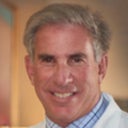Posted underBreast Fat Transfer q&a
Should I be at my ideal weight prior to getting Fat Transfer to my breasts?
I am about 10lbs over my ideal weight, which is still considered in the healthy BMI range. My personal ideal & normal weight is 120lbs, and I'm currently 130lbs and 5'3. Should I lose the 10lbs prior to getting lipo/fat harvest & transferred to increase my breast size? OR should I try to maintain the additional weight/fat and lose the 10lbs 3-4months post-procedure?
Answers (9)
From board-certified doctors and trusted medical professionals
Dr. Gerald Minniti, MD, FACS

Dr. Gerald Minniti, MD, FACS
Board Certified Plastic Surgeon
Answer
Dr. Pejman Aflaki, MD

Dr. Pejman Aflaki, MD
Board Certified Plastic Surgeon
Answer
Dr. Gary M. Horndeski, MD

Dr. Gary M. Horndeski, MD
Board Certified Plastic Surgeon
Answer
Dr. Kenneth Hughes, MD

Dr. Kenneth Hughes, MD
Board Certified Plastic Surgeon
Answer
Dr. Farbod Esmailian, MD

Dr. Farbod Esmailian, MD
Board Certified Plastic Surgeon
Answer
Dr. Daniel Barrett, MD

Dr. Daniel Barrett, MD
Board Certified Plastic Surgeon
Answer
Dr. York Jay Yates, MD

Dr. York Jay Yates, MD
Board Certified Plastic Surgeon
Answer
Dr. Ronald J. Edelson, MD

Dr. Ronald J. Edelson, MD
Board Certified Plastic Surgeon
Answer
Dr. Connie Hiers, MD, FACS
Dr. Connie Hiers, MD, FACS
Board Certified Plastic Surgeon
Answer
More Breast Fat Transfer Questions
See all Breast Fat Transfer Q&AWE SEND PRETTY
EMAILS
What’s trending? Who’s turning heads? Which TikTok myths need busting? We’ve got you. No fluff, no gatekeeping—just real talk. Get our free, unfiltered newsletter.